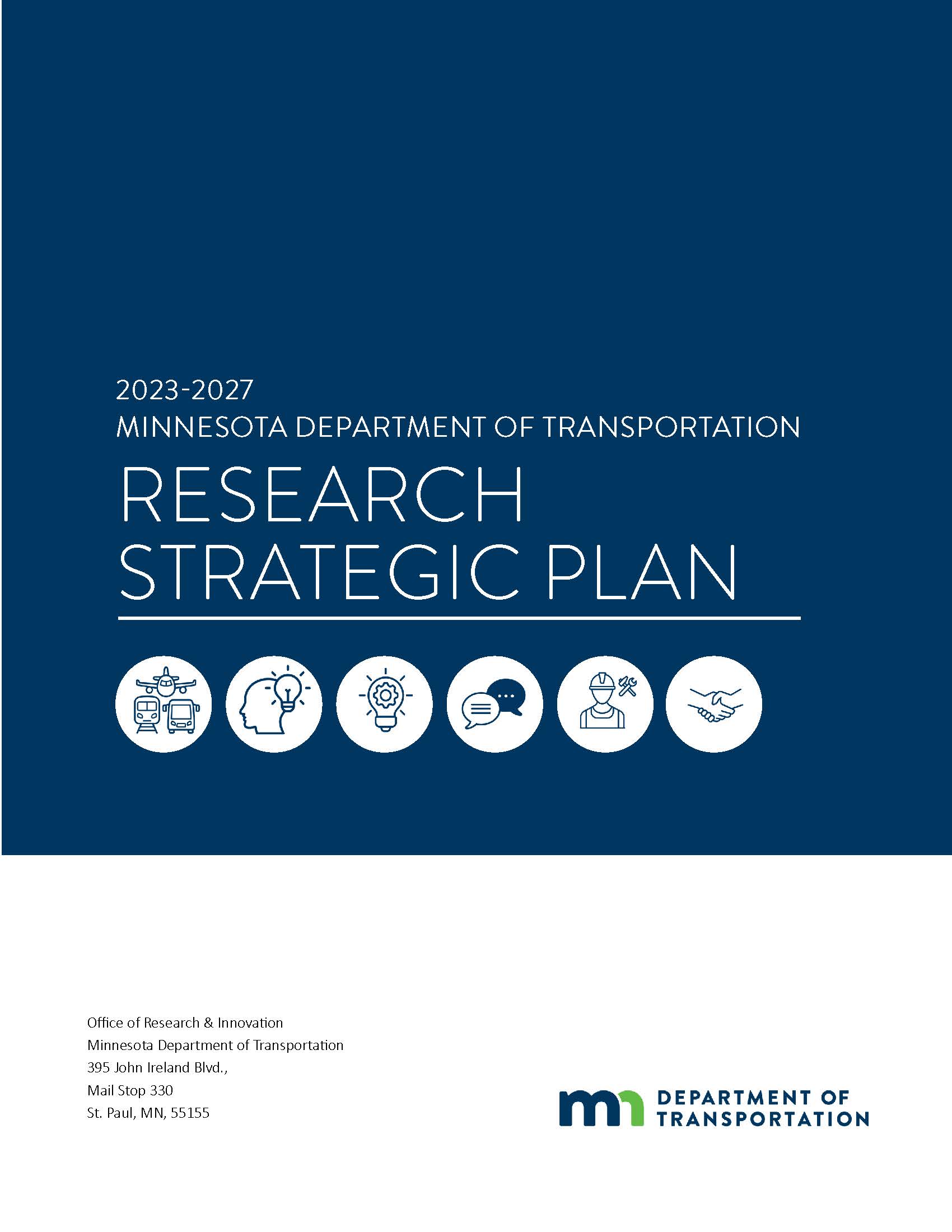Our strategic direction

We are in a transformative era in transportation. Rapid and interconnected changes are occurring with respect to technology and automation, demographics and societal needs, health and the environment, workforces and workplaces, and economic and funding challenges. All of this impacts the transportation sector. Transportation is no longer just about how people or things move from one place to another, it is about connecting people to family, friends and community.
Research is a key to responding proactively to these changing conditions and expectations through informing the development of policies, plans, and projects that affect the movement of people and goods. MnDOT’s vision statement reflects the impact transportation has: “Minnesota’s multimodal transportation system maximizes the health of people, the environment and our economy.” Our new mission directs us to consider the importance of how the system connects Minnesotans: “Connect and serve all people through a safe, equitable and sustainable transportation system.” Research must drive the learning necessary to keep pace with technological advancement and adapt to evolving socio-economic needs.
The Research Strategic Plan serves as an enterprise-wide blueprint for research that supports our agency mission, informs decisions, and positions us to adapt to evolving needs. This plan establishes a research vision, mission, guiding principle, and six strategic goals to guide our research through 2027. The MnDOT Research Strategic Plan (2023-2027) supports and aligns with the following overarching agency plans: MnDOT Strategic Plan (2023-2027), 20 Year Minnesota State Highway Investment Plan and Statewide Multimodal Transportation Plan.
Vision
A people-centered transportation system that provides safe, equitable, and sustainable transportation for all through purpose-driven research and innovation.
Mission
Conduct research to transform our transportation system creating a better future for all.
Guiding principle
Develop a portfolio of research that supports MnDOT’s commitment to equity, innovation, safety, stewardship, and sustainability.
Values
- Informing
- Forward thinking
- Innovating and implementing
- Communicating
- Knowledge building
- Partnering
What we'll do: Goals and strategies
Conduct research to inform decision making
- Meet with specialty offices, districts, functional groups and other stakeholders to share research and understand research needs
- Conduct annual research briefings for the Senior Leadership Team, providing insights to shape policy, planning and operational decisions
- Report annually on our research portfolio, documenting and showcasing the benefits of research
Proactively identify and address emerging issues to adapt to rapid change
- Expedite research to address time-sensitive research opportunities
- Promote participation in national, state, academic and industry research
- Facilitate and engage in forums focusing on emerging research topics
- Foster stronger connections with academia, industry experts, practitioners, and community members in research idea generation and need statements development to address emerging issues
Expedite research implementation and pilots to improve product and service delivery
- Proactively identify implementation potential throughout the research process
- Streamline the process for transitioning completed research into implementation
- Promote and share the implementation program to raise awareness and encourage participation
- Explore national funding opportunities to support piloting innovations
- Identify and pursue industry partnerships to facilitate implementation and pilots
Deploy new and better ways to share research
- Explore and pilot communication tools to broaden the dissemination of research results
- Increase staff awareness of research and innovation through enhanced communications
- Create a centralized location for research to expand accessibility and utilization
- Tailor research communications, using the right tools to deliver the right messages to the right audiences
- Expand communication events to build a diverse and inclusive research community
Use research to cultivate a skilled interdisciplinary workforce
- Advance equity by including diverse perspectives in the research process
- Encourage participation in the research program as a professional development opportunity
- Participate in agency development programs to expand staff knowledge of transportation
- Host educational sessions on engaging with research
Engage in strategic partnerships to maximize the impact of research
- Foster existing and diversify new research partnerships to expand research opportunities
- Expand research partnerships to prevent redundancy in research
- Utilize partnerships to leverage funding resources and maximize return on investment
- Explore new funding sources for research
